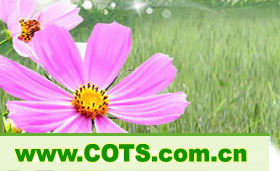Burial was originally inherent in the original Tibetan burial custom. However, in popular burial later, Tibet, changed the perception that the burial would be the worst kind of burial. Are generally used for leprosy, anthrax, smallpox and other infectious diseases of the body, or robbers, killers, the bodies of those killed by knives. Before the peaceful liberation of Tibet, or Shuizang law does not allow them to burial, allowing only digging embedded in the earth, meaning that eradication of the roots is. The burial customs, mainly in Sichuan, Ganzi and Aba Autonomous Prefecture of two parts of pop. Dege County, buried in the vicinity of relatively fixed for the burial pit about 1.5 m deep cone-shaped, Xialue scatter grain, dead with a cloth wrapped corpse was placed sitting face west to the pit, and then filling with soil matter can not be base burial mounds, put an inscription above the curse upon the Mani stone, plug streamer funeral come to an end. Bai river slope area, after the corpse under the pit where there are few Whitehead Lei Cheng grave mound, on a wooden plug, the local Tibetan called "Baka" (anti-ghosts memorial tablets). Daofu along the hi-style with a hole on the funeral, that is, no digging down. But in the horizontal soil dug a pit wall. Horizontal wooden coffin into the pit, outside the hole with stones Qi Hao, and then paste mud flat. Some draw a cow or a sheep's head and the top get some lime, insert a streamer.
Cremation Cremation at the Guardian Tibet region over the past more commonly carried out at the monks and nobles. The general procedure is: After death, the corpse bundles seated, fixed in the wooden frame and carried to crematorium. Lei Cheng corpse on the cross-shaped pyre, and then four weeks compared with the wood stays. The monks were invited to sit the face of dead, chanting prayers the soul of the dead was the god of heaven to accept, while sprinkling oil ignition pyre. Cremation is completed, the bone ash picked up and taken to the summit of mountain sow the wind, or scattered in the river, and to let water away. In parts of eastern Tibet and Tibetan areas in Sichuan that the prevalence of cremation. In xinduqiao area as holy burial of cremation, funeral ceremony is very special, someone dies from several elderly scrubbing corpses to cross stacked limbs, facial features squeezed in butter, and then use white corpse Chan Guo, the deceased head cloth painting "swastika" symbol, left chest painted six stars, 9 bow and arrow, a fish, a Tau, a sheep's head. Then placed the body on the floor main room, please read lamas 3 days after. Cremation of the deceased when preparing grains and sugar together with cremation. Furthermore, we need to prepare 161 small wooden sticks, 39 wheat flour, butter cookies, and 39 packets for burning festival gods and hungry ghosts.
Tap the basic purposes of the Grand Living Buddhas of Tibetan burial burial towers. Some Buddha was cremated the body, put the ashes into the pagoda; also some Buddha's death, the body directly through the clay into a statue after dehydration. Prestigious Grand Living Buddha's death, the corpse wiping salt dehydration, and then coated with spices and other valuable substances, body wrap with silk mahjong, jigsaw puzzle, buried in the tower, thinking that permanent preservation. Lama points of gold, silver, copper, wood, mud all kinds, according to the level determined the status of living Buddhas. Such as the Dalai Lama and the Panchen Lama passed away after going to the construction of gold, while the Palestinians can only be built Gandan Silver Pagoda in red. After the completion of the pagoda were deposited in the monastery.
Tibetan children premature death, generally not to hold a funeral, but rather within the body on the jar, cover being thrown into the river; while others put jar within the long-term storage in the Treasury.
Tibetan areas in remote areas there is the sarcophagus of individual burials and cliff burial customs.



